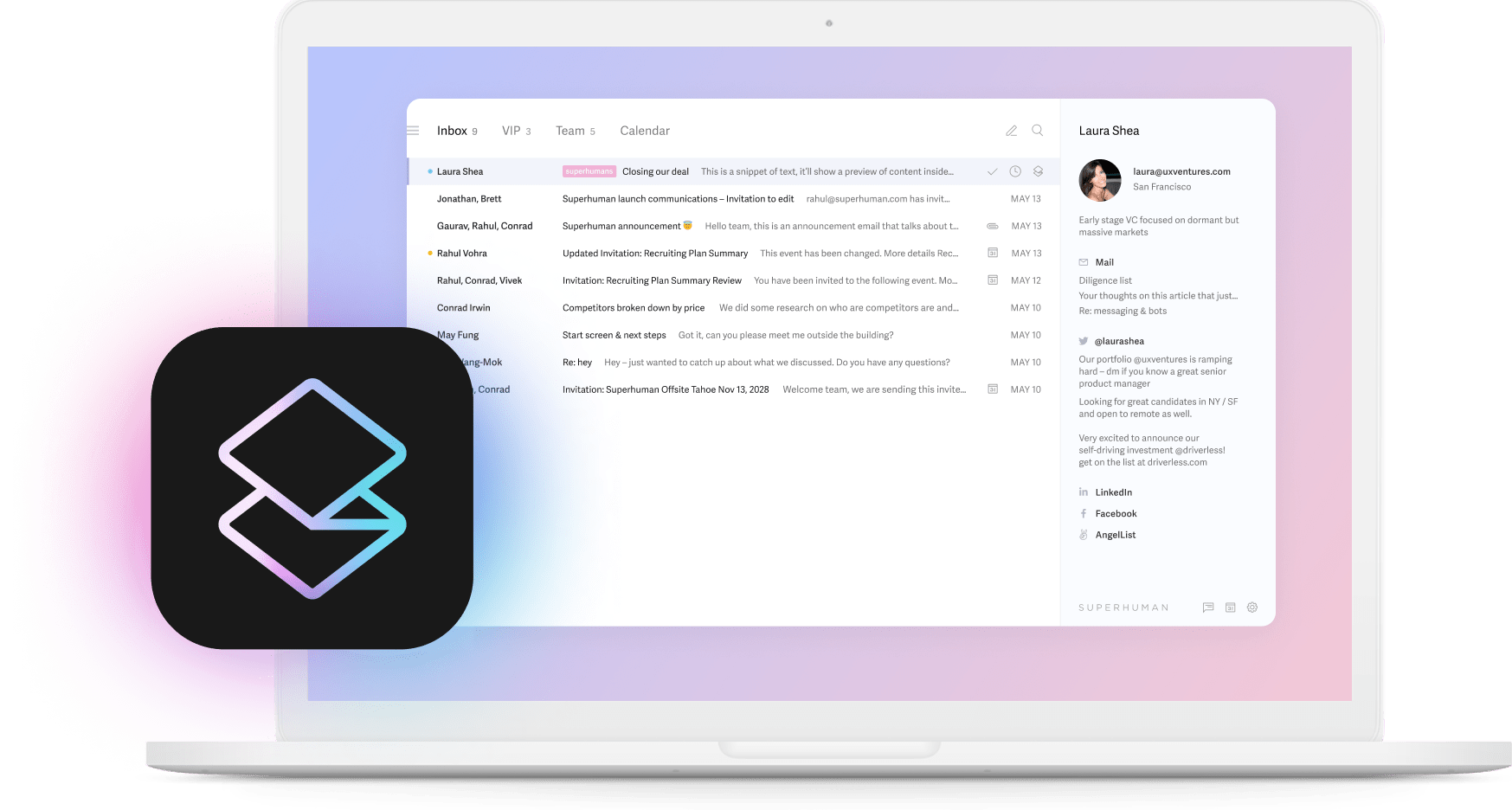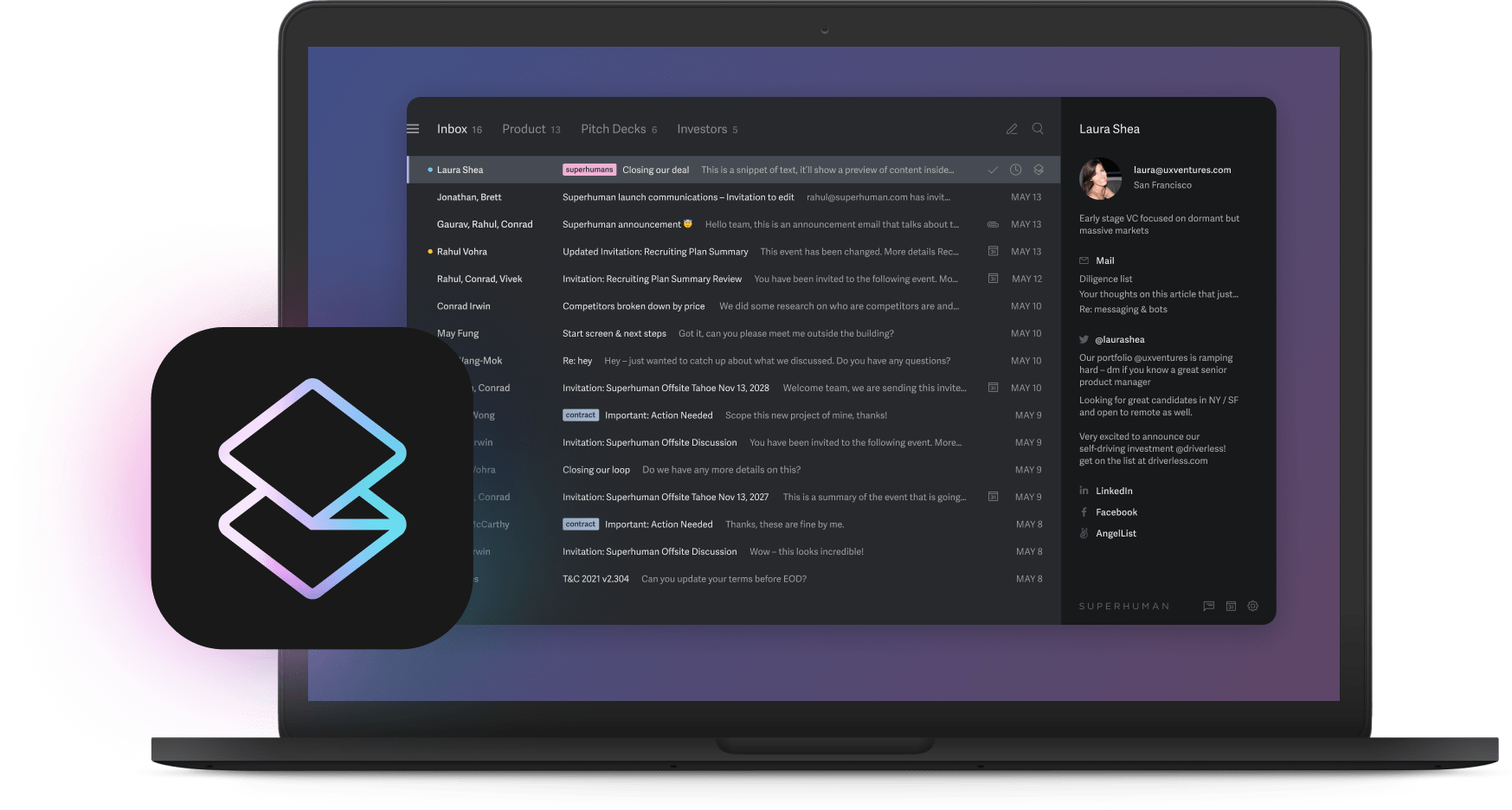
You just sat down with your coffee. Already dozens of new emails. Three vendors need contract approvals. IT wants sign-off on new software. Finance has questions about Q4 budget. And buried somewhere in there, a message from your CEO marked urgent.
Welcome to Operations.
If you work in Operations, you know your inbox is where everything collides. Vendor negotiations, project updates, compliance docs, escalations. You're the hub, so everyone's emails land on your desk.
The problem? Gmail and Outlook treat every email the same. A contract renewal worth $500K gets the same priority as someone's lunch order. That's broken.
Your inbox should work the way you do
Operations teams need something different. You need vendor emails separate from internal requests. Urgent stuff in its own space. Project updates grouped together so you can review them all at once.
That's exactly what Split Inbox Library and Auto Label Library do. These are one-click setups that organize your inbox the way Operations teams actually work. Pre-built options for tools like Asana, Slack, Google Workspace, and dozens more. No manual filters. No weekend setup projects. Just click, enable, done.
Split Inbox: Different emails, different spaces
Split Inbox creates separate tabs in your inbox. Think of it like having different desks for different types of work.
The library includes pre-built configurations for tools Operations teams use daily. Asana, Monday, and ClickUp for project management. DocuSign and SignNow for contracts. Google Workspace and Office for collaboration. Even Salesforce and HubSpot if you work with sales.
Say you manage vendors. You'd have tabs for:
- Purchase orders and confirmations
- Invoices and payment notices
- Shipping and delivery updates
- Contract signatures and approvals
Now when you need to review contracts, you go to one place. When vendors email about deliverables, they're in another. No more hunting through hundreds of mixed messages.
Auto Labels: See what matters without opening emails
Auto Labels tag your emails automatically. You see what each email is about before you open it.
Picture this. You glance at your inbox and immediately see:
- Red tags on emails needing approval
- Blue tags on vendor communications
- Yellow tags on cross-team requests
- Green tags on FYI updates
You know exactly what needs attention first. No more opening 20 emails to find the one that matters.
How to set this up (real examples)
Let's walk through three scenarios every Operations person faces.
Managing vendor chaos
You work with 20+ vendors. Each has different terms, renewal dates, and contact people. Keeping track is a nightmare.
Here's the fix:
Step 1: Set up vendor-focused Split Inbox
- Go to Settings ⚙️ then Split Inbox Library
- From "General" category, enable "Purchases" Split Inbox
- This creates tabs for orders, receipts, and purchase confirmations
- Also consider "Finance" for invoices, bills, and tax documents
Step 2: Add smart labels for vendors
- Go to Settings ⚙️ then Auto Label Library
- From "General" category, enable "signature" for documents needing sign-off
- From "Finance", turn on "invoice" for bills and payment notices
- From "Purchases", add "order" for purchase confirmations and "shipping" for delivery updates
- Use "Build your own" to create custom labels for specific vendors
That's it. Your vendor emails now organize themselves.
Coordinating cross-team projects
You're managing an office move. IT needs network specs. HR wants seating charts. Finance questions every expense. Facilities sends daily updates. Chaos.
Here's how to tame it:
Step 1: Enable project management Split Inbox
- In Split Inbox Library, look at "Project Management" category
- Choose from Asana, Trello, ClickUp, or Monday integrations
- These create tabs for task updates, deadlines, and project notifications
- Add "Collaboration" tools like Notion or Confluence if your team uses them
Step 2: Set up project labels
- From Auto Label Library "General" section:
- Turn on "meeting" to flag scheduling emails
- Add "respond" for messages needing your response
- Enable "mention" when you're tagged in conversations
- For recruiting projects, add "recruiting" from General category
- Create custom labels using "Build your own" for specific project needs
Now project emails sort themselves while you focus on solving problems.
Tracking compliance and documentation
SOPs, approval chains, audit trails. These emails can't get lost, but they shouldn't clog your daily workflow either.
The solution:
Step 1: Set up document-focused Split Inbox
- From Split Inbox Library, check "Document Signing" category
- Enable splits for DocuSign, SignNow, PandaDoc, or your signing platform
- Add "Collaboration" tools like Google Workspace or Office for shared docs
- Consider "Notifications" from General category for automated alerts
Step 2: Create compliance labels
- From Auto Label Library:
- In "Legal" section, enable "contract" for terms and approvals
- In "General", use "signature" for docs needing sign-off
- In "Finance", add "tax" for tax documents and receipts
- Build custom labels for specific compliance needs
Important docs stay organized and findable. Your daily inbox stays clean.
Power moves for operations pros
While the library gives you instant options for tools like Asana, DocuSign, and Google Workspace, sometimes you need something specific. That's where "Build your own" comes in.
Mix AI and rules for precision
Auto Labels support hybrid configurations. Perfect for tricky situations.
Example: You only want to see vendor complaints that reached executives.
- AI prompt: "Emails about problems or dissatisfaction with service"
- Add rule: From vendor domains AND includes executive emails
- Result: Only escalated vendor issues get flagged
Build time-based workflows
Operations runs on schedules. Set up time-sensitive organization:
Daily standup prep: Make a "Today's Priorities" tab showing urgent emails from the last 24 hours.
Weekly vendor check: Create "This Week's Vendor Issues" combining date rules with vendor domains.
Month-end madness: Set "Month-End Tasks" to activate after the 25th for emails about reports or reconciliation.
Connect all your tools
The Split Inbox Library covers tools across your entire operation:
- Project tracking: Asana, Monday, ClickUp, Trello
- Documentation: Google Workspace, Office, Notion, Confluence
- Contracts: DocuSign, SignNow, PandaDoc
- Sales coordination: Salesforce, HubSpot, Pipedrive
- Meetings: Zoom, Google Meet, Otter
- Hiring: Greenhouse, Lever, Workday
Each integration creates dedicated tabs for that tool's notifications, keeping everything organized automatically.
What happens when you organize like this
Teams using these setups report big improvements:
- Email processing drops by half. When similar emails group together, you handle them faster.
- Nothing urgent gets missed. Visual labels make important stuff impossible to overlook.
- Cross-team work speeds up. The right people see the right emails quickly.
- Compliance gets easier. Documentation naturally stays organized for audits.
Overall, Superhuman customers save 4 hours per person every single week and respond to twice as many emails. For Operations teams juggling complex workflows, that time savings is huge.
Start simple, build from there
Pick one problem first. Don't try to fix everything today. What's your biggest email headache? Start there.
Check after a week. See which tabs get too full or stay empty. Adjust as needed.
Share with your team. When everyone uses the same system, everything flows better.
Review every quarter. Your role changes, your inbox setup should too.
Stack features. Combine Split Inbox with other Superhuman capabilities. Use Snippets for quick vendor replies. Set reminders for contracts. Use Team Comments to coordinate internally on Asana tasks or DocuSign agreements.
Make email work for you, not against you
Your inbox doesn't have to be a source of stress. With Split Inbox and Auto Label Libraries, you can organize it to match how you actually work.
Getting started takes 30 seconds. Open Superhuman, hit Settings, pick your first configuration. By the time you finish your coffee, your inbox will be organized.
Your vendors get faster responses. Your team gets better coordination. You get your evenings back.
That's what email should have been all along.






